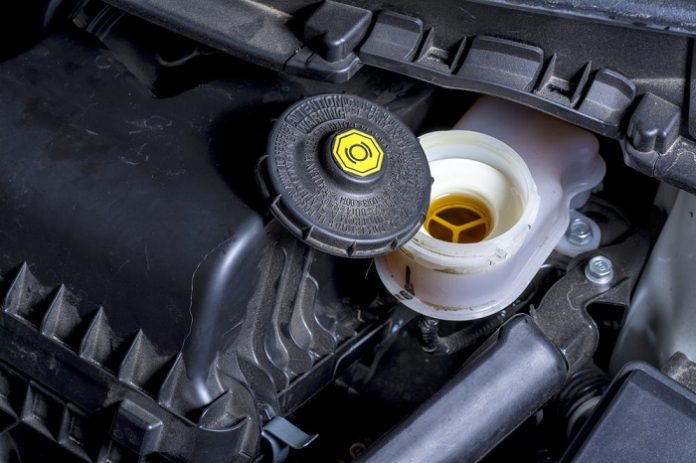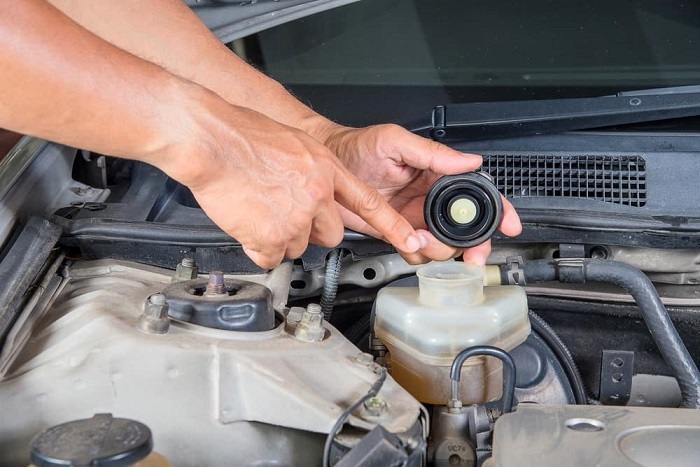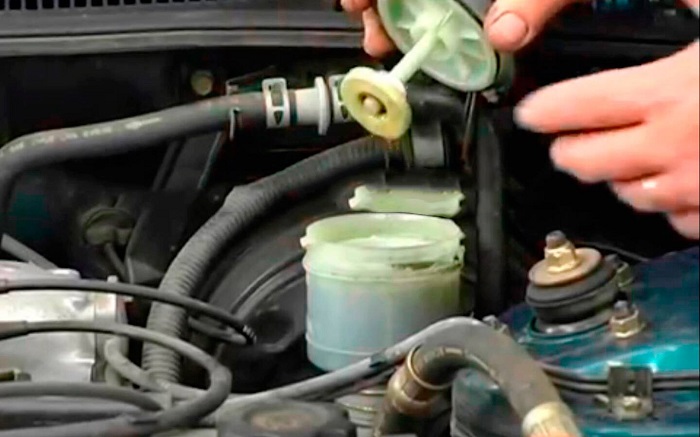The brakes are one of the most important parts of the safety of our vehicle, along with the suspension and tires. Therefore, it must be checked that the braking system is in perfect condition. What it means to periodically check the condition of the pads and discs, but also the brake fluid and possible leaks in the hydraulic circuit through which it moves.
When the level of this liquid is low, the causes can be several. For example, the wear of the brake pads causes a level drop because the calipers have to be closed more to compensate. In this case, there is no need to worry because it is a normal process. At most, the liquid must be refilled a little, if it falls below the minimum indicated in the master cylinder. The cause that should seriously worry you is a leak of brake fluid. In this article, we will give you the keys, so you know if you have one and how to locate it.
Keep reading: Is It Possible to Negotiate Your Car Insurance Policy?
How to Check Brake Fluid Loss?
A warning light has come on in your dashboard or not. It never hurts to check the brake fluid level periodically. The situation of the brake fluid reservoir varies from one model to another but is usually close to the engine.
Brake fluid tank or master cylinder
If the level is low, and you see that it is not due to the wear of the tablets, you have to go to check for leaks. To make sure you check the level several times by pressing the brake between each check. If the level continues to drop, it is normal for you to have a leak. Another symptom is that the pedal has a spongy touch. In addition, if after pressing the brake pedal several times, you see that it goes to the bottom. It is necessary to check the brake system immediately.
In the event of a brake fluid leak, we must quickly take our car to the workshop, since it is very dangerous to drive in these conditions.
Check the leak
The braking system of a car is composed of many parts: pipes, hoses, lines, clamps, wheel cylinders, master cylinder, etc. Nor should we forget to check the brake pump, as well as the ABS block, since we can also have some leakage by one of these systems. If you want to locate the leak quickly, we recommend the following method:
Check the master cylinder or liquid reservoir. The sleeves that go to it or the plug itself may leak if it is not screwed tightly. If the problem is not here, go to the next point to locate the leak in other parts of the car.
Place the car on top of them. If you can, do it by pushing and using the handbrake, because it is not convenient to use it with this type of breakdown. Once placed, squeeze the brake pedal so that the liquid comes out of the leak and stains the papers you put. The brake fluid is yellow when it is new and turns a brown hue as time passes.
Thanks to this system, you will be able to know in which part or parts of the car there is a liquid leak. For example, if the stain is next to a wheel, you can remove it and take a look at the sleeves, the wheel cylinders, etc.
What happens if I run out of brake fluid?
You should not drive with a car without brake fluid. Without it, your brakes will not work, because there is nothing that drives the pressure from the pedal to the brakes. Call a crane to take you to the nearest workshop.
The situation can be more complex if you run out of circulating brake fluid. In this case, you should know that the only mechanical elements you have left to lose speed are the engine brake and the handbrake.
Can a brake fluid leakage be plugged?
Covering a leak in a car’s braking system is not a good idea. If you have a leak in a certain part, fix the part in question or replace it. Keep in mind that the hydraulic circuit through which the liquid passes has to withstand great pressure, so little use will be made of the equipment that tries to cover a leak when you press the brake pedal and increase the pressure.
In addition, it is a circuit that can be heated very precisely by pressure. What would complicate using some materials to cover the leak? That is why brake fluids have a very high boiling point that is above 200º C, even in the worst quality.
What brake fluid to use?
If you have seen that you are not leaking or have already repaired what you had, you have to recover the proper level of brake fluid. However, there are several types and each vehicle must carry the appropriate one for its design. In addition, if you are only going to refill, you have to take into account that there are liquids that cannot be mixed together.
The best thing you can do is look at the stopper of the brake fluid tank. If it is not indicated, consult the manual of your car to know which one corresponds to your version. If you do not have the manual, you can also take advantage of the sale pages of car parts because entering your brand, model and engine will give you the liquids that you can use with the appropriate DOT code.
Brake fluid levels:
DOT 3: It is the worst quality brake fluid because it picks up humidity and is the one with the least temperature. Its boiling point is 205º C. The advantages it has are that it is the cheapest and the most vicious, so it is the least likely to leak through the joints.
DOT 4: It is one of the most used today because they are the minimum necessary for cars with ABS and ESP systems. The sale is that they endure more temperature without boiling (230º C) and that they are even more viscous than 3. In addition, there are brands that announce higher boiling temperatures.
DOT 5.1: This brake fluid is the one with the highest temperature: around 270º. In return, it is the least viscous and the one that most easily leaks through the joints.
DOT 5: It is the least used, but it also has a very high boiling temperature. About 260º C. Being composed of silicones instead of Polyethylene glycol, it cannot be mixed with DOT 3, 4 and 5.1.





